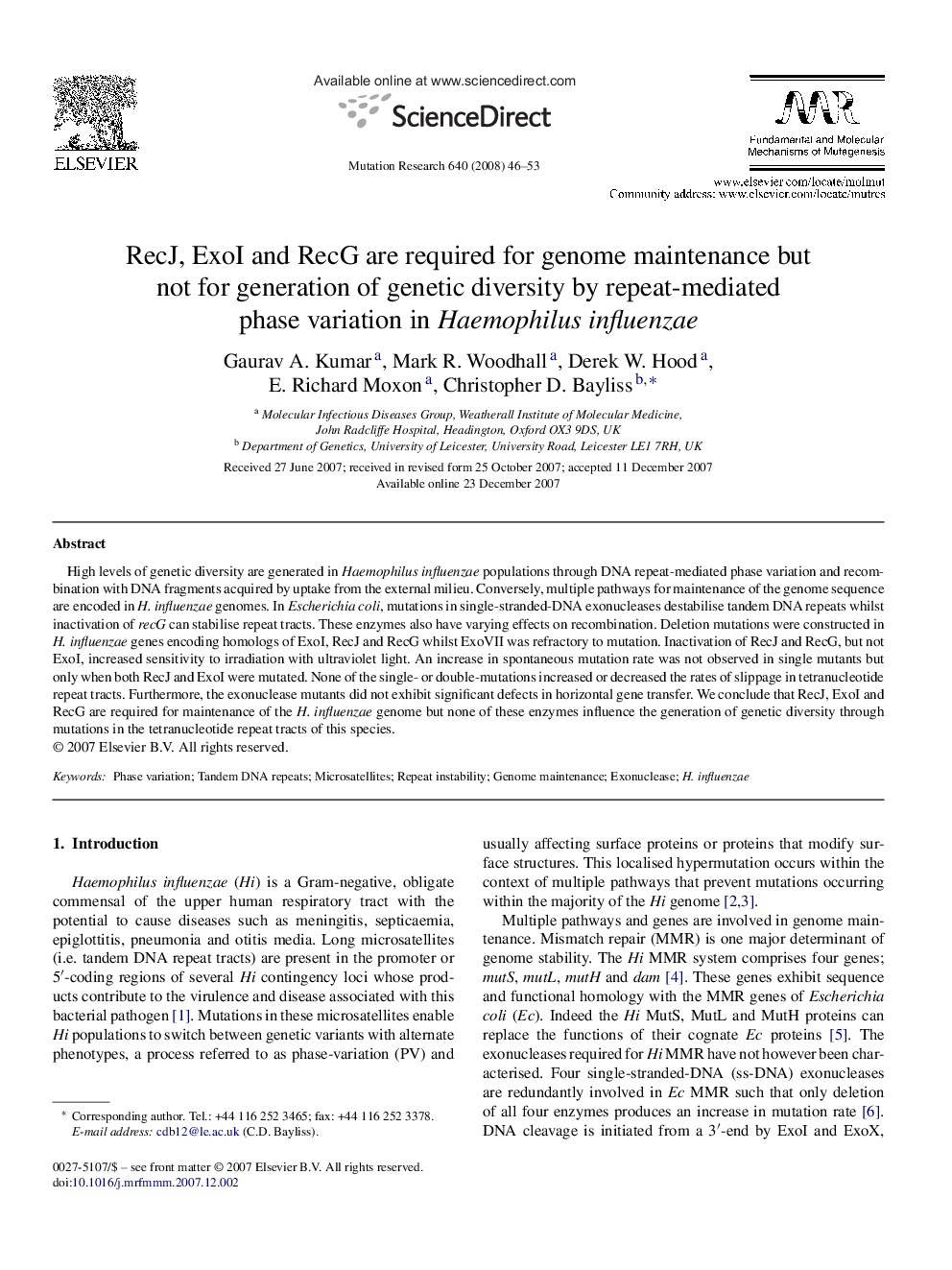| Article ID | Journal | Published Year | Pages | File Type |
|---|---|---|---|---|
| 8456119 | Mutation Research/Fundamental and Molecular Mechanisms of Mutagenesis | 2008 | 8 Pages |
Abstract
High levels of genetic diversity are generated in Haemophilus influenzae populations through DNA repeat-mediated phase variation and recombination with DNA fragments acquired by uptake from the external milieu. Conversely, multiple pathways for maintenance of the genome sequence are encoded in H. influenzae genomes. In Escherichia coli, mutations in single-stranded-DNA exonucleases destabilise tandem DNA repeats whilst inactivation of recG can stabilise repeat tracts. These enzymes also have varying effects on recombination. Deletion mutations were constructed in H. influenzae genes encoding homologs of ExoI, RecJ and RecG whilst ExoVII was refractory to mutation. Inactivation of RecJ and RecG, but not ExoI, increased sensitivity to irradiation with ultraviolet light. An increase in spontaneous mutation rate was not observed in single mutants but only when both RecJ and ExoI were mutated. None of the single- or double-mutations increased or decreased the rates of slippage in tetranucleotide repeat tracts. Furthermore, the exonuclease mutants did not exhibit significant defects in horizontal gene transfer. We conclude that RecJ, ExoI and RecG are required for maintenance of the H. influenzae genome but none of these enzymes influence the generation of genetic diversity through mutations in the tetranucleotide repeat tracts of this species.
Related Topics
Life Sciences
Biochemistry, Genetics and Molecular Biology
Cancer Research
Authors
Gaurav A. Kumar, Mark R. Woodhall, Derek W. Hood, E. Richard Moxon, Christopher D. Bayliss,
